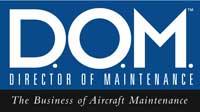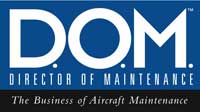
Mentoring?

Dear Mr. Escobar,
I just finished reading your editorial (April 2015) regarding ‘Mentoring’. I’ve been receiving your magazine for a number of years and reading about all the successful personal cover stories of various DOMs. I would like to share what some of my personal experiences on mentoring have been over the past 30 years as an A&P/IA. I apologize for the length of this – it only covers the major highlights of my career.
Back in 1979, after many years of bouncing from one construction job to another, I made the decision to go back to school to obtain my A&P. I’ve always had a desire to work on aircraft, having grown up in the shadow of Chicago Midway Airport. When I started school, the major airlines at Chicago O’Hare were recruiting students for employment before graduation. By the time I graduated, President Reagan had fired all of the air traffic controllers over wage disputes. That was followed by deregulation, and so began the downward spiral for opportunities in aviation.
After receiving my A&P in 1982, I first tried to get a job at my local FBO in Schaumburg, IL – the same FBO/flight school I had earned my pilots license from just three years prior. As I walked behind the manager as he ignored me, I tried to sell myself by offering to fuel, service, wash aircraft – anything they needed in order for an opportunity for a job. The manager stopped suddenly, turned around, and in a gruff manner said, “I don’t need another ‘hobbyist’ mechanic’ in his hangar, so get lost.” Maybe it was because I was wearing a tie to look professional? And so my aviation career began with this old WWII mechanic’s mentoring.
The next year was consumed sending out dozens of resumes to major airlines, primarily United and American – the two largest carriers at O’Hare. If you were lucky you would receive a 3x5 card thanking you for your interest and your resume would be on file (the round file) for a year. Unexpectedly, I received an offer to interview with the long gone Mississippi Valley Airlines (MVA) at Moline/Davenport Airport. A classmate of mine working there was able to get me the interview and I was thankful. I jumped at the opportunity and moved to Davenport. There was no training or break-in period, you were simply given a task card for the evening and let loose to work on the old ‘Flying Box Car’ (Shorts 340/360 with PT6 turbo props). This was their idea of mentoring.
MVA did have a program with Pratt & Whitney for mechanics lasting more than year to get advanced training on the PT6. When the airline realized that these trained mechanics were not returning from Pratt & Whitney, they cancelled the program.
I could no longer subsidize my dual residency with the low wages from MVA. I returned to Chicago and went back to my construction/rehab business while continuing to look for an aviation job. After the Moline/Davenport experience, I was not interested in moving out of state for another low-paying aviation job. Did I mention that my construction work helped pay for my four-year Bachelors Degree?
Towards the end of the 80s, I was able to secure a job with AAR Allen Aircraft in Elk Grove Village, IL. I was hired as a ‘temp’ worker. This job had nothing to do with working on aircraft or engines. The company hired A&Ps to sign their 8130 certifications for resale of used aircraft parts and prepare them for shipment. I remained as a ‘temp’ with no benefits and minimum wages for close to two years. I was able to move into a sales job as a regular full-time employee thanks to my Bachelors Degree. I hated the job! After about eight months, I requested to return to the ‘QC’ dept., this time as a regular employee. I remained there for two more years with no chance of any significant advancement.
I have been hearing about the lack or shortage of aviation technicians for close to 35 years. Is it any wonder? In today’s high-tech world, there are many better-paying and safer jobs available that are not looked upon as ‘grease monkey’ jobs.
The Arizona Years: In 1989 my wife and I decided we had enough of Chicago winters and move to Phoenix, AZ. I had heard that Phoenix had an active aviation industry. I hoped that I would have better job opportunities in a new town. It was not to be. My first job was with Sabre Tech. You may recall, it was the company that was involved with MD80 crash in the Florida swamp. This outfit was straight out of the ‘Wild West’ with a revolving door staffing problem. I lasted just weeks! I did not want to lose my license because of their shenanigans.
My next job was the first of many flight training schools. The first one was the school that had recently trained one of the German pilots to crash an Airbus into a mountainside because he was depressed. This ‘premier’ flight school also paid their mechanics from $7.00/hour to $12.00/hour. Once again, I was hired as a ‘temp’ mechanic at $7.50/hour. They also suffered from a revolving door staffing problem.
For the next ten years I worked for no less than five flight schools. They were all basically the same, ‘Get the plane out the door!’ Don’t ever ground a plane for any reason. At one point, I asked one of the DOMs for a raise. I asked for $15.00/hr. His response was, ‘You’ll never get that kind of money in aviation, not in ‘at will’ Arizona.” Two of the flight schools I worked for actually trained two of the 9-11 suicide pilots – you remember, they only wanted to learn to fly straight and level and didn’t care about learning how to land or take off.
One of these DOMs, when asked about a problem or if you had a question about a task, his usual response was, “Look it up in the Manual” and then walked away. Some mentoring! Ironically, he managed to get hired by the FAA, as did three other former DOMs I worked for. None of them were well educated, helpful and mostly arrogant toward the mechanics. Go figure!
By 1999 I returned to Chicago. Through a friend I was able to get a job with another aircraft contract maintenance operation at O’Hare. I was responsible for docking, overseeing the fueling, ‘oil up’ the engines and APUs, doing minor repairs and push back of the aircraft for departure. We serviced four foreign airlines. During this time, I had an American Airlines mechanic to train who was moonlighting for extra cash. As I got to know this person (I did not know that he was one of the shop stewards at AA) he could not understand why I had not been ‘picked up’ by the ‘Majors.’
I was now 54 years young. Despite this disadvantage, he took my resume to his supervisor whose response was, “Where has this guy been? We look for people like him.” Needless to say, I was amazed I had finally reached the pinnacle after 20 years of applying and searching. I began training in late 1999. Despite working graveyard shift, American was the ONLY operation that actually spent the time and money to train their mechanics on every aircraft and every system. I loved that job! Alas, the dream came to an abrupt end. I had completed my initial training and was finally comfortable with my duties and the graveyard shift when the terrorists attacked the WTC on September 11, 2001. I was one of thousands of mechanics layed off as a result of this tragedy. The parting words from the supervising manager were, “If you can find another job, take it; because you will never be recalled back.” Those were the encouraging ‘mentoring’ words from management.
Back to Arizona: I met a CFI pilot who had a small four-plane flight school, who needed an A&P mechanic. I worked for him for about two years. Unfortunately he rented his aircraft to outside customers that managed to crash and destroy two of his four aircraft. His insurance company cancelled his coverage, and I was once again out of job.
In 2002 I obtained my Inspection Authorization and attempted to freelance for private aircraft owners. This too turned into a misadventure. The liability of signing off pilot/owners aircraft became too risky – private owners who expected me to look the other way and sign off their annuals because they did not want to spend money to repair their aircraft; or the owners who would tell me what needed to be fixed and what ‘did not’ need fixing. After being stiffed a number of times, I gave up the venture. Two years ago I finally decided to give up on aviation. I gave up looking for work and chose to retire. Last month, after 14 years, I had to surrender my IA because I no longer was ‘actively engaged.’ So, for every success story in aviation, there are many more stories that are not.
In conclusion, when I hear or read that some industry giant laments they are unable to find or retain qualified mechanics I have to grind my teeth. It is not a mystery why the aviation industry has this perceived problem. In my 30 some years of experience with dozens of companies and hundreds of mechanics; I have NEVER met a mechanic that said, ‘I love my job.’ On the contrary, I have known many who left the industry for better paying jobs or better working conditions in other industries. Those of us, who have followed the slow erosion of a one-time desirable career know why aviation will continue to be a less desirable career path.
The reasons for this decline are simple:
1) Deregulation
2) Outsourcing jobs to foreign countries
3) Allowing non-certified people to work on aircraft
4) For the most part, no ‘mentoring’ or continued education provided by employers
5) Consolidation (merging) of the industry
6) Low pay, no benefits ‘at will’ employment
7) The job itself, is dirty and dangerous
8) Discriminatory hiring practices (At one time AA hired only people with military service)
9) Companies with no respect for the profession (I don’t recall any supervisor ever saying ‘Good Job’ or ‘Thank You’
10) Little or no opportunity to advance in the field.
Sincerely,
John Vannucci, Cave Creek, Arizona
